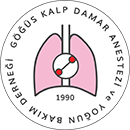

Comparison of Four Different Block Techniques for Postoperative Analgesia in Thoracotomy
Fatih Doğu Geyik1, Gülten Arslan1, Jülide Sayın Kart1, Ummahan Dalkılınç Hökenek1, Mahmut Talha Doğruyol2, Recep Demirhan2, Kemal Tolga Saracoğlu31Department of Anesthesiology and Reanimation, University of Health Sciences, Kartal Dr. Lütfi Kırdar City Hospital, İstanbul, Türkiye2Department of Thoracic Surgery, University of Health Sciences, Kartal Dr. Lütfi Kırdar City Hospital, İstanbul, Türkiye
3Department of Anesthesiology, Icu§perioperative Medicine Hazm Mebaireek General Hospital Hmc, Industrial Area Ar-rayyan Doha, Qatar
Objectives: Postthoracotomy pain requires multimodal perioperative management, including systemic and regional techniques. This prospective, randomized study aimed to evaluate postthoracotomy pain scores using the visual analog scale (VAS) as well as consumption of analgesic in 24 h and complications.
Methods: The patients were randomly assigned into four groups (25 patients each group) according to the analgesia technique used: Intercostal nerve block (ICB), thoracic epidural block (TEB), ultrasonography-guided erector spinae plane block (ESPB), and ultrasonography-guided thoracic paravertebral block (TPVB) groups. Multimodal analgesia was achieved with tramadol, paracetamol, and intravenous pethidine via patient-controlled analgesia (PCA) for all patients. The VAS scores at 30, 60, 90, 120 min, 6, 12, and 24 h postoperatively, consumption of analgesic at the first 24 h, rescue analgesic requirement, and side effects were recorded.
Results: The VAS scores were the highest in the ICB group and the lowest in the TPVB group at all time periods after thoracotomy (p<0.05). Likewise, total pethidine dose, number of PCA trials, and PCA data were determined to be at least in the TPVB group. However, only the number of PCA trials was found to be statistically significant (p=0.03). In terms of side effects, no difference was observed between the groups. Nausea and vomiting occurred in two patients in the ICB and ESPB groups, whereas hypotension occurred in two patients in the TEB group.
Conclusion: In conclusion, ultrasound-guided single-injection TPVB is more reliable and preferable in thoracotomy, as it is associated with low pain scores and has no side effects.
Sorumlu Yazar: Gülten Arslan, Türkiye
Makale Dili: İngilizce
(49 kere indirildi)













